

YOUR COURSE POLICY
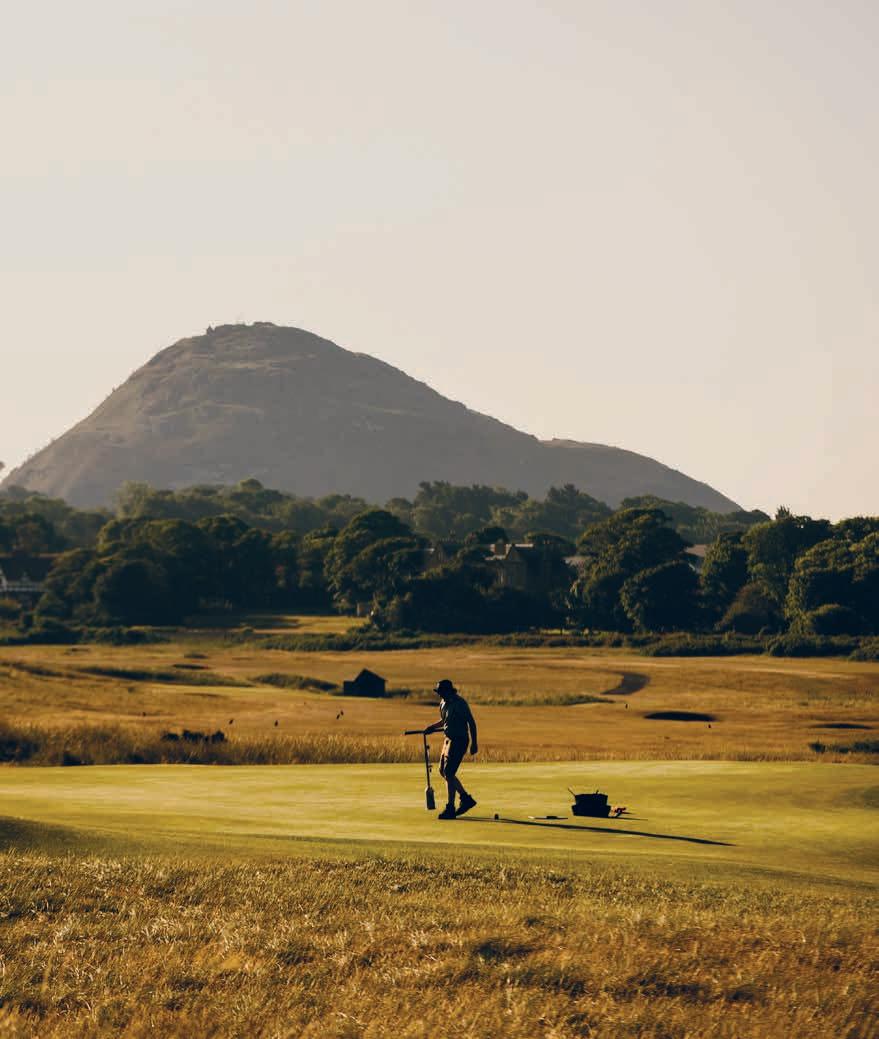

Captains’ Foreword
As Captains’ of all Clubs, it is our pleasure to introduce and support Kyle’s first, Your Course Policy.
Now the season moves into full swing, The West Links sees a large volume of rounds with that traffic inevitably taking its toll. Every golfer has been told many times that it is their responsibility to repair pitch marks, replace divots and rake bunkers properly. Whilst it would be convenient to say it’s all down to visitors, we need to acknowledge that this is not always the case.
Kyle’s document outlines our responsibilities in looking after our course, supporting Kyle and the Team and ensuring it is presented in the best possible condition to you our Members and our guests and visitors too.
The next time you play have a look around. If you are on the green, find a pitch mark or two to repair. If you see a bunker that is poorly raked then please take the time to level it out. Divots are a perennial problem and we’re pleased to tell you that Kyle is actively working on a solution that will allow Members, on a voluntary basis, to take a container of sand onto the course.
Enjoy your golf on The West Links and please try to leave Your Course as you would like to find it.
As always, thank you for your support and together we look forward to seeing you many times throughout the season.
Fraser Symon, George Cochrane, Fiona Maciver and Gordon Scholes

“Enjoy your golf on The West Links and please try to leave Your Course as you would like to find it.”
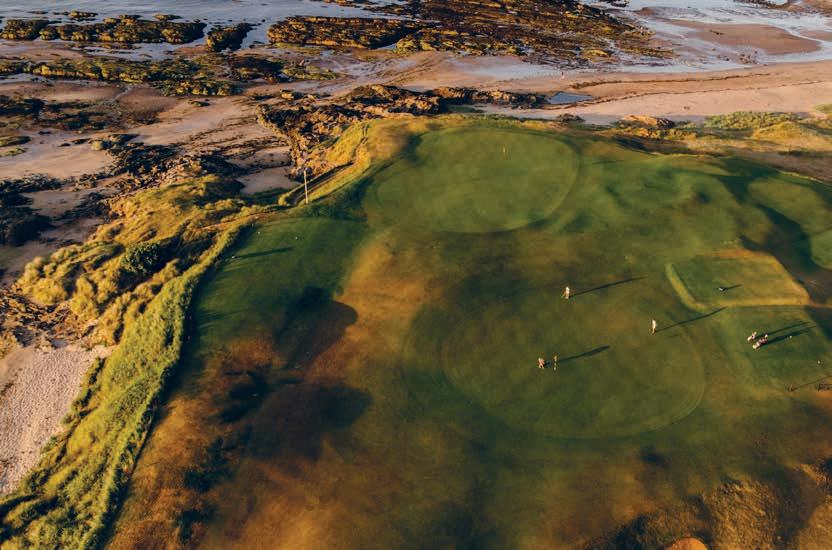

Background
The West Links at North Berwick is a busy golf course with high Member and visitor rounds every year. Most days are a challenge for the Greenkeeping Team to conduct tasks and they have to start early in the morning not interfere with golfers. There are many aspects of Course Maintenance that we would like to undertake but with the high volume of golf, this is not always achievable.
This Your Course policy reminds the Membership that the golf course belongs to you, which means there is an element of ownership and accountability for the Membership without the need to rely on the Greenkeeping Team to undertake smaller time consuming tasks that can be achieved by golfers.
In essence, this document describes the basic etiquette expected in Golf Clubs, but will hopefully deliver clarity on how golfers should be acting on the course and also how they can take ownership of the course and raise standards and awareness.
Agreement
This policy has been scrutinised, approved and fully supported by the Greens Committee, before being introduced by the Captains of all Clubs.
Method Statement
To give the Members a greater sense of ownership of the West Links and to help improve the on-course standards and presentation.

Greens
The most important surface on the golf course which receives the most attention and scrutiny from golfers. Conditions of the greens can vary greatly on weather conditions, the time of year, what maintenance has been carried out on them and the underlying agronomic conditions. We are going through a process of improvement on the greens which has yielded impressive results so far albeit on occasions affecting the smoothness and trueness of the greens. This work is vital to improve the long-term conditions of the greens and provide a better playing surface for years to come.
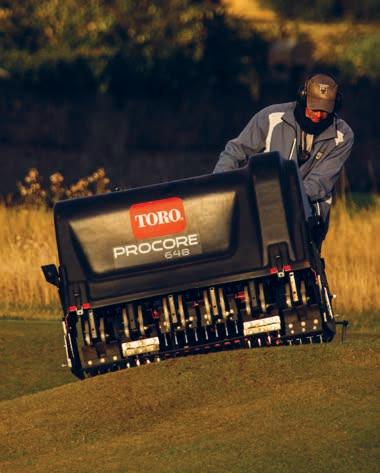

Repairing Pitchmarks
One of t he biggest complaints and frustrations from golfers is unrepaired pitchmarks on the greens especially during wet periods of the season when the greens are softer. In the height of the golfing season, well over 250 golfers could play the course in a day. Although many of these players will not leave a pitchmark, a significant percentage of this number will. As greenkeepers, we want to leave the greens in the best possible condition for play, but repairing a large amount of these pitchmarks in a morning is time-consuming and deters us from conducting other tasks on the course. More specifically on competition days where golfers are competing for the best scores, it is poor etiquette to leave pitchmarks on the greens to the detriment of your fellow competitor.
Pin Removal/ Replacement
Often, we see golfers taking the pin out and throwing it on the ground with force. The pin should be removed and placed on the ground gently. When putting the flag back in, care should be taken to make sure it is placed correctly and no damage to the hole has been done.
Tees
The starting ground for every hole, the tees require a lot of maintenance to regenerate an area from being worn with divots back into a suitable condition for play.
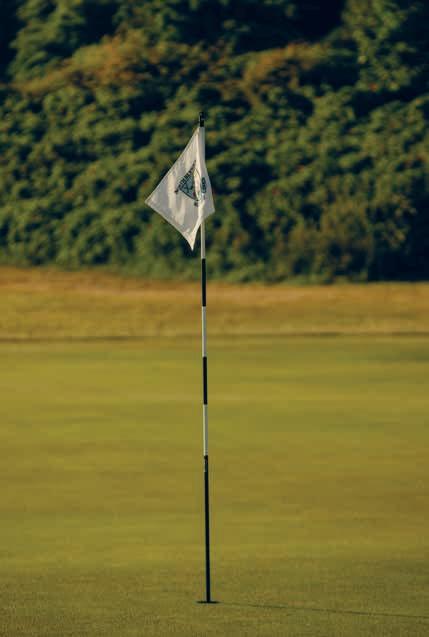
Broken Tees
Broken tees should be placed in the iconic blue bins or wooden tee caddies on par 3 holes.
Litter
All litter should be placed in the blue bins on the tees, or the bigger bins situated around the site.
Divots
Divots do not need to be replaced on tees as they will be divotted by the greenstaff throughout the week.
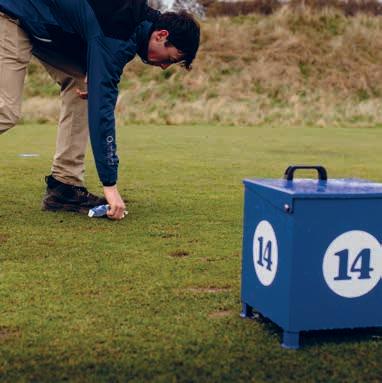
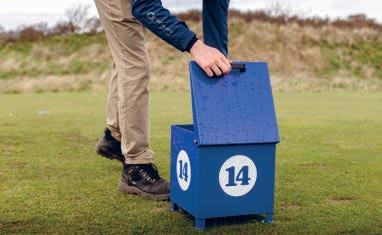
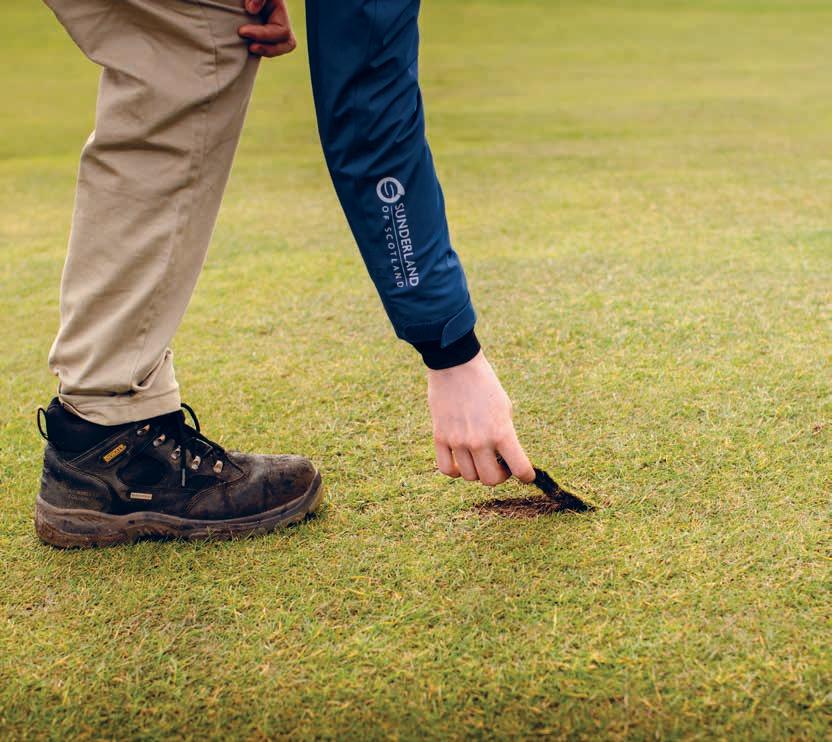
Fairways
On the West Links, we have over 16 hectares of managed fairways which has grown by 5 hectares in the last few years. This is a huge area to cover and takes a lot of time to maintain from daily cutting, spraying, trimming approximately 600 fairway sprinklers but also filling in divots. We have employed a divot squad over the last few years to divot the tees and fairways around the course, but the volume of divots and staffing issues have affected the amount of
divots they can fill in. We are planning to introduce facilities for golfers to fill in their own divots, but this will take a little time to get the infrastructure in place and the divot mix boxes positioned around the course.
Replacing Divots
Until the facilities for golfers to fill in their divots is in place, please make sure to replace all divots on the fairways.
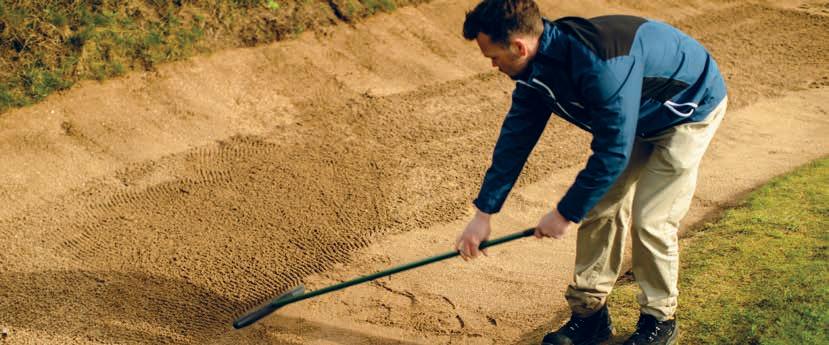
Bunkers
Raking Bunkers
It may come as a surprise to a lot of people, but greenkeepers across the UK spend more time on average in bunkers than on greens. Most of this work is simply raking the bunkers.
The bunker sand can move quite drastically with the wind and can blow from a low part of the bunker up onto the face. General day to day play can also displace a lot of the sand with most golfers tending pull the sand towards the outskirts of the bunker when they are walking out creating a build-up of sand.
When playing from a bunker, the best course of action should be:
• To pick up the nearest rake before entering the bunker to play your shot –rake your way out if required.
• Find the nearest, safest and shallowest part of the bunker for entry. Jumping down banks or faces can cause damage to the bunker but could cause a serious accident.
• Put the rake down beside where your ball is lying but out of the way, so it will not interfere with your shot.
• Play your shot – closer to the pin the better!
• Put your club down at the side of the bunker.
• Grab the rake with two hands and start raking, filling in and smoothing where the ball was hit and where your feet dug in. sand should be pushed and pulled to create a level surface.
• Keep this action going as you move out of the bunker to your point of entry to save you having to rake more than you need to.
• Place the rake fully back in the bunker in the line of play.
17th Bunker
At the 17th bunker, due to the steep banks, there are areas that are lower to make it easier to walk in and out of. The small blue and white posts are in place initially to deter people from jumping in from a high point and again will prevent a serious accident.
Walkways and Paths
To help spread wear and tear, we will start to put in traffic control measures around the course in areas that really suffer. This will try to push the flow of foot traffic in a certain direction whilst work. It is important to not walk over areas that are being rested.
Hooped/Roped Areas
All hooped or roped off areas should be avoided and not walk across unless it is for the retrieval of a ball, where the shortest route of access should be sought.
Etiquette
Golfers pride themselves on their etiquette and on-course behaviours. Unlike other sports, there are many unwritten rules and behaviours expected by golfers whilst out on the course. This is something that is felt by many to be less prevalent now as it was a number of years ago. One of the main unwritten rules of etiquette is to “leave the
course in a good condition for those playing behind you”. By following some of the guidelines in this document, it will help to create more consistent playing surfaces whether it is on the greens or in the bunkers. As I say to many golfers, we set the course up every day for play, but as soon as golfers start playing, there is not a lot we can do about the condition of the bunkers if they are not raked properly, pitchmarks are not repaired or tees are lying about the tee.
Another form of etiquette is the shouting of “Fore” when errant shots look to be heading towards an unsuspecting group. Being situated close to the coastline, we get a lot of days where the wind can be quite strong making it harder to hear shouts of Fore. Golfers should also wave their arms in the direction of the travelling ball to alert people to the on-coming shot. This is even more crucial is balls are heading towards the greenstaff if they have machinery running. With the machine on low revs and the wearing of ear defenders, the greenkeeping Team will not hear shouts but will react to an outstretched arm pointing in the direction the ball is travelling.
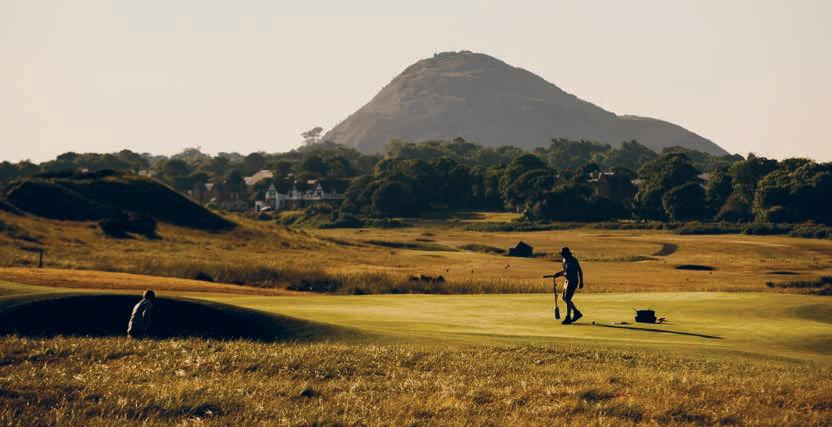
Self-Policing/ Accountability
Implementing a policy like this aims to change the culture within the clubs. Although many Members and visitors do already comply, it is important and critical that everyone buys into this policy for the full benefit to be reached. Self-policing amongst golfers will be valuable to help make sure all measures are being met. holding people accountable whether it is part of their group of the preceding/ following groups.
Caddies
Caddies at the West Links play a key role by ensuring golfers have a wonderful experience when they are here. Training will be delivered to all Caddies to make sure they are following the procedures correctly but also ensuring best service to all customers.
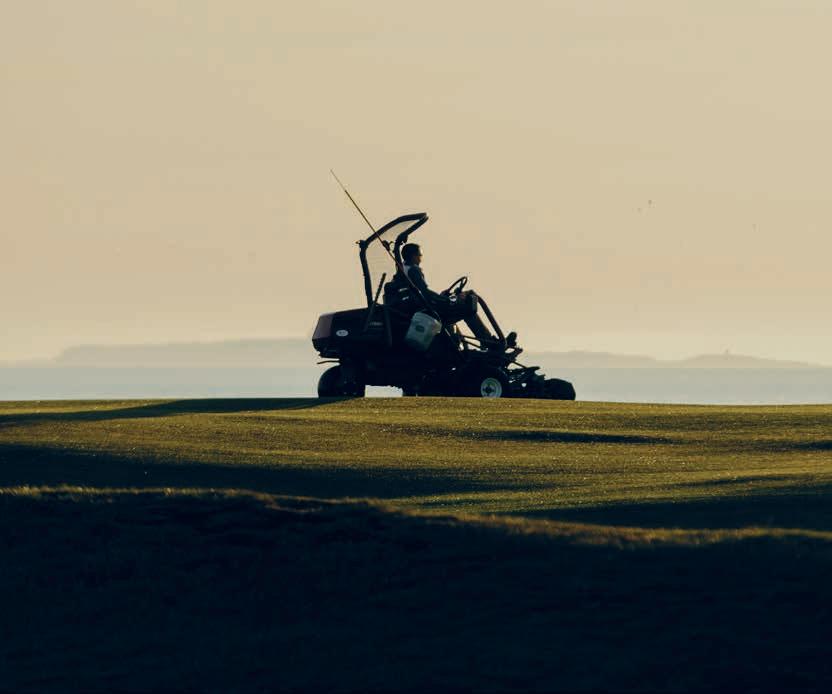
As always, thank you for your support and co-operation as we push towards presenting the West Links the best possible condition.
We have a talented, dedicated and devoted Team of Greenkeepers who work hard to deliver the course everyday. With our Team numbers now being the strongest ever, please do stop, say hello and introduce yourself to our Team who will enjoy letting you know more about their experiences and what the West Links means to them too.
Thank you again for your support of this important policy and I look forward to seeing you out on the West Links.
Many thanks
Kyle Cruickshank Course Manager
